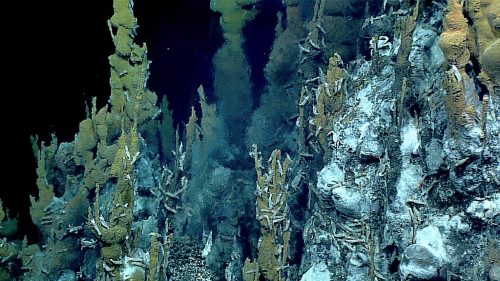Earth is remarkable in countless ways, but particularly for providing a home to the only known living creatures in the universe. That Earth has the building blocks for life is extraordinary, but how did these circumstances come about? New research lead by Dr. Josep Trigo-Rodriguez from the Space Sciences (CSIC) and the Catalan Institute for Space Studies (IEEC) sheds light on the clouded origins of Earth’s history.
In order for Earth to have the climate it does today, chemical substances, such as hydrogen, nitrogen, water, and carbon dioxide amongst many others, must have reached the planet during its development. These substances are examples of volatiles, which are elements and compounds that compose the atmosphere and crust. The delivery of these volatiles, however, sources much debate. In his work, Trigo-Rodriguez and his colleagues examine carbonaceous chondrites, a type of meteorite, as a source for these volatiles. Their interest stems from two properties of the meteorite: its matrices and its lack of chemical differentiation.
Chondrites were formed in the early stages of the solar system, and are generally made of fine dust and minerals. These components arrange into a matrix, which allows for the storage of both particles and water. As millions of years pass, the composition of the meteorites often changes, yet, because of their distance from the sun, a few chondrites have been found maintaining conditions comparable to their original states. Trigo-Rodriguez says, “From careful study of these meteorites, the primordial mineralogy can be inferred by keeping in mind that these bodies suffered thermal metamorphism and/or aqueous alteration just after their formation.”
The process of differentiating between chondrites that have faced aqueous alteration and those that have not, however, is difficult and has become the focus of this project. Aqueous alteration is a result of the infiltration of the matrix by hydrated materials, and using a variety of technologies such as scanning electron and ultra high resolution transmission electron microscopy, Trigo-Rodriguez and his team show that many samples of chondrites have undergone this process. Though, due to heating from radioactive decay or due to the shock
compaction by impacts, there is no longer water found in the pores, evidence of water-based changes in the meteorites is clear. As consequence of aqueous alteration, water is bonded in the rock-forming minerals, so it was retained in the meteorite structure. Once aqueous alteration has been established, it is possible for researchers to look for “pure” chondrites in order to examine their role in the appearance of volatiles on Earth.
Such a process likely occurred during the Late Heavy Bombardment, an event in which planets were impacted by a high number of objects from space. The team concluded that during this time, “a large amount of chondritic materials reached the early Earth’s surface at an annual rate of thousands of billions of metric tons.” As a result of these collisions, the water and volatiles from the chondrites reached Earth and likely created the foundations upon which the planet was built.
Future studies of this theory involve searching for more “pure” meteorites in order to better understand the volatiles they carried and the overall conditions in which Earth was formed. Such undifferentiated samples are hoped to be gained through future missions to future bodies covered with frozen water, such as the Centaurs. Though the circumstances of the origin of Earth are still largely a mystery, research, such as the analysis of chondrites, provides us with a greater clarity into our humble past.

